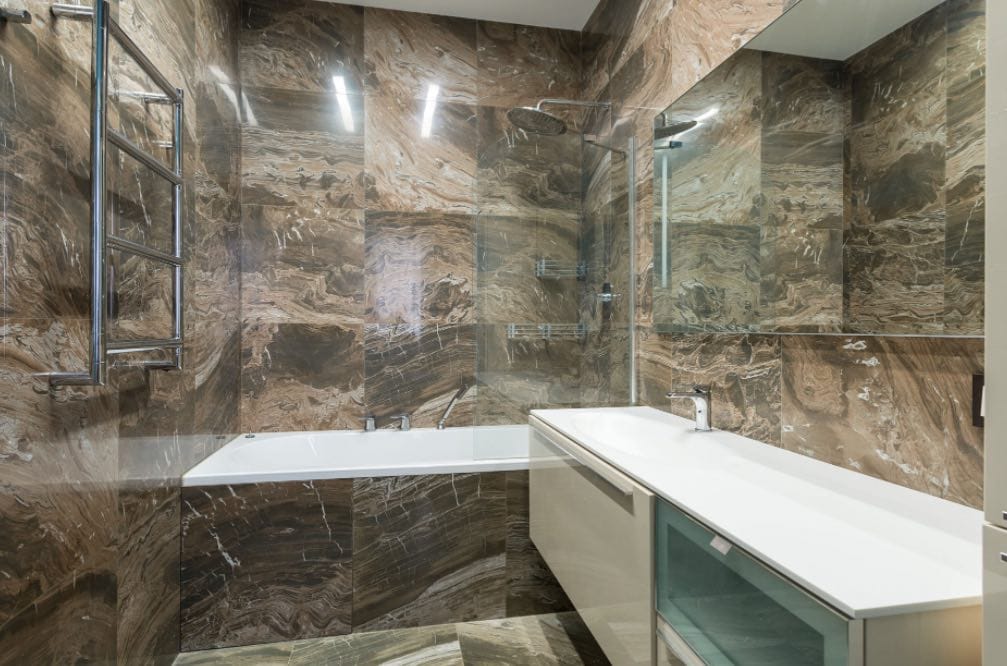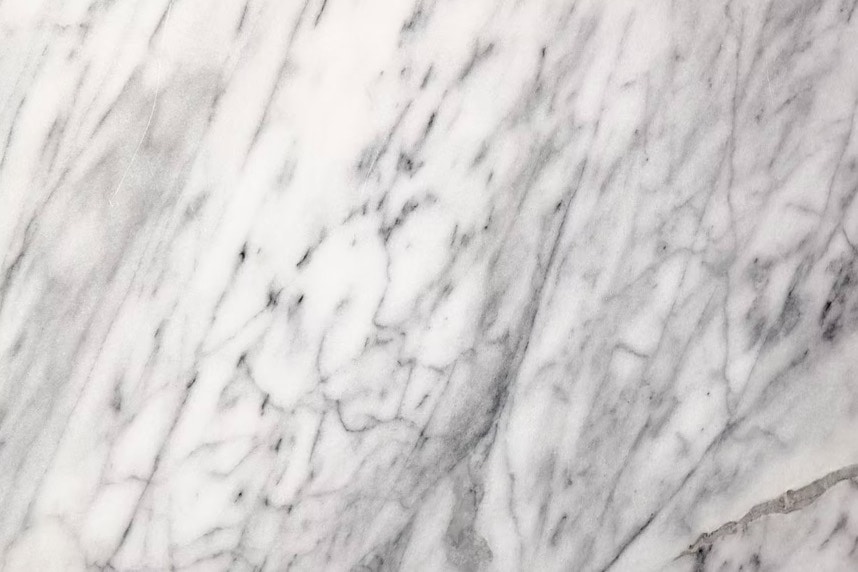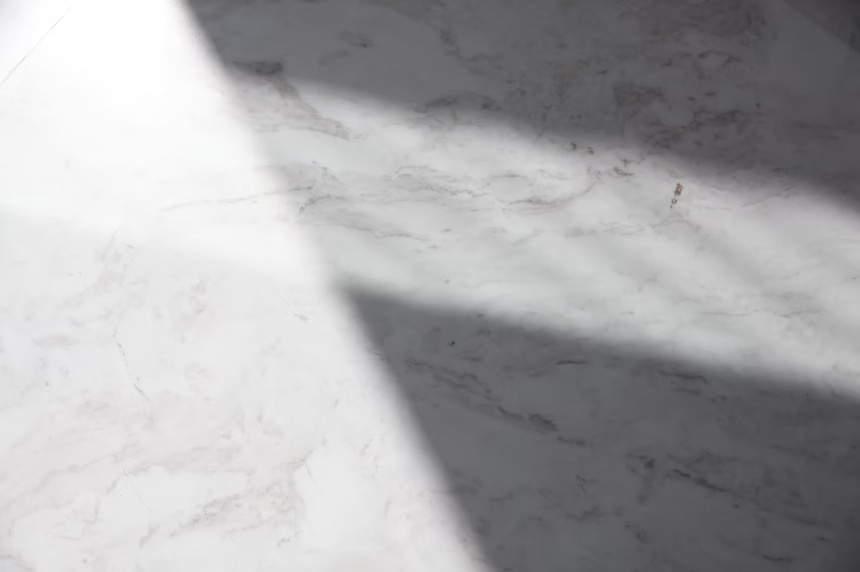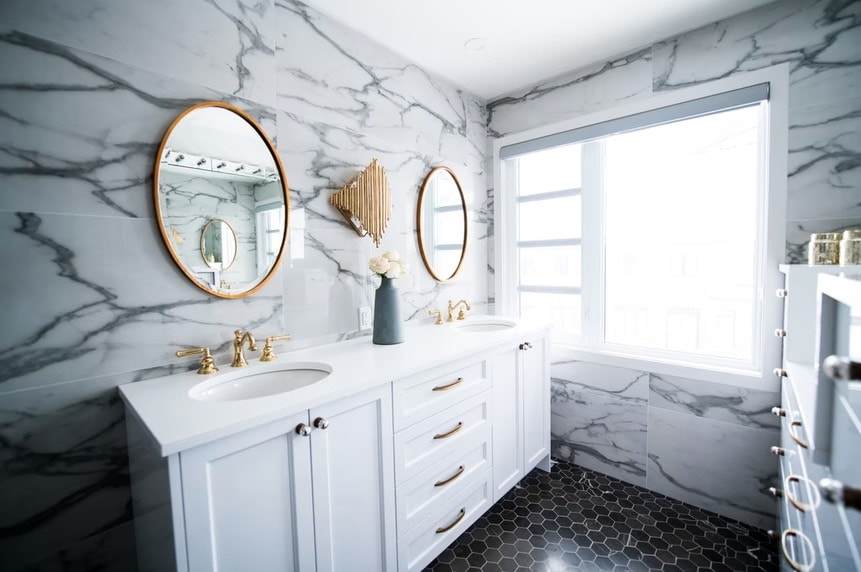Being faced with a decision to choose between tiles and marble is quite a dilemma for the ones who are inclined towards perfection. However, conceptualizing a stunning interior requires significant deliberation and understanding to incorporate elements that elevate and upgrade the outlook of the place.
A seamless blend of high-end natural stones coupled with great furnishings and décor creates an eclectic fusion. Logical creativity backed by a conscious selection of interior design elements is the key to transforming an ordinary place into a luxurious abode.
Feeling ho-hum about choosing marble or tile on the floor? Here, we bring you a detailed description and comparison of both surface materials that will help you make the best choice suited to your specific home conditions. Understanding these differences will help you make the right choice and choose an option that is just right for your needs.
When you walk into any room, your advancing steps are welcomed by the expanse of the floor in front of you. Floors are one of the first things that make an impact on you as you enter a room. If you don’t like anything in your room – from décor to the wall colour to the furniture – it’s quite easy to get it changed, but the same doesn’t apply to flooring. Changing your floor treatment is a challenging & time-taking process, hence choosing your flooring needs significant consideration and care.
Whether you agree or not, the first thing you notice about a home is its flooring. Enter any home, and you cannot help but experience its floor’s texture, tone, and feel. Aren’tAren’t we right? Both from the standpoints of function and aesthetics, choosing the right kind of flooring is necessary for your home. That brings us to the topic of flooring selection, where the debate is tilted towards marble versus tiles.
The process of installing either of these takes a lot of time and preparation. So, before you select the one for your home, it makes sense to understand its properties and maintenance processes to make an informed decision. To help you, here there’s a quick breakdown and a detailed guide for understanding the difference between tiles and marble.
Marble and tiles have their respective strengths and drawbacks, but they are equally popular.

What Is The Difference Between Marble And Tiles?
When it comes to composition, marble is formed as a natural stone from dolomite and calcite. It is a porous, dense stone with a greater rate of absorption. Not to mention how royal its surface is! With intricate swirls and plush patterns, marble is recommended by designers and architects as a flooring material.
Tiles are made by baking a mixture of minerals like feldspar, silica, quartz and clay at a high temperature. Due to this process, tiles get their characteristic sheen and glossy texture with the formation of a glassy substrate. Because of this outer glaze, tiles have a lower absorption rate of water and they last longer.
Both tiles and marble comes in an infinite range of options and varies from one another in terms of properties, composition, variety, Aesthetics and strength, etc. Flooring is the one major attraction within a home that defines the overall appearance and appeal. It is also an arduous and complex task to change the flooring; therefore, choosing the right flooring option is extremely important.
To facilitate wiser decision making and address your concerns or doubts about choosing between tiles and marble, we bring to a quick game-changing guide prepared and backed by sound research.
The word ”Tile” is derived from the French word ”tuile”, which is, in turn, from the Latin word ”tegula”, meaning a roof tile composed of fired clay. Tiles are generally used for covering roofs, floors, walls or other subjects such as the top of a table. Tiles are more suitable for harsher applications, such as flooring. They are less likely to absorb moisture and stains, which may become difficult or impossible to remove afterwards. Tiles always play an important role when it comes to interior décor. Nowadays, ceramic tiles are preferable for household décor, as it is the most effective and gives a beautiful effect to the room.
There are varieties of tiles, and all vary in type and cost. So it becomes a little tricky to choose the right tile for the right place from thousands of designs and colours. So it becomes a difficult task to choose a tile for home, office, mall or airport.
On the other hand, marble is a metamorphic rock that is about or characterized by a change of form. It is composed of recrystallized carbonate minerals. The problem with the marble stone is that it is a porous stone, so that can stain. As it is a rock, the most commonly used stones are limestone and dolomite rock. Limestone makes up about 10% of the total volume of all sedimentary rocks. It has several uses as a building material, as a total for the base of roads, as a white substance used for colouring or as a filler making in products such as paints or toothpaste.
Marble is formed naturally, which is why it is more expensive than tiles. Furthermore, the price of marble flooring varies as per its quality, texture and colour. If you are eyeing to buy Indian marble, then it will cost you up to Rs 250 per square foot; for Italian marble, you will have to shell out Rs 600-1,000 per square foot.
The expense for tiles mainly varies as per their brand and design. You would have to spare Rs 200-300 per square foot based on its quality to set them up. The good part about tiles is that they are man-made, making them more affordable and preferable for the short term.
In the older times, tiles were all the same, but now with the new technology and machines, tiles look more perfect with the finalized finishing and good hardness. Unfortunately, tiles are very hard but easily broken. Thus one may require an expert to cut them. On the other hand, marble is a beautiful natural stone cut and polished in a factory.
The prominent difference between both the terms is that Marble tiles are made from essential marble stone, whereas porcelain tiles are frequently only made from a lump of white clay, and they have colour all the way through the tile. In addition, marbles can be used on walls, whereas porcelain tiles are hard and used for flooring and interior and exterior walls.
FAQs About Marble Floors
Does marble tile chip easily?
Easily Scratch-able: Marble floor tiles are easily damaged if not properly maintained. They can be damaged from scratches. Even scraping and chipping can ruin the surface very badly. While choosing cleaning products, stay clear from those that have high pH levels as these products contain acids and can stain the tiles.
Are marble tiles good for the living room?
Depending on your family, the living room can take a beating, and you will get easy maintenance and high durability in marble flooring. In addition, you can adapt the modern stone to many different styles over the years. Since it is so durable and long-lasting, you won’t have to change it when you change other things around it.
Which floor is good for health?
Concrete flooring is one of the best options for flooring when we think from our health perspective. They are highly durable, versatile, sustainable, weatherproof and economical. In addition, they have been found to refine the air, making it more breathable by reducing toxins. Concrete floors also augment the lights within the space.
Which Is Better: Tiles Or Marble?
Appearance And Aesthetics
Aesthetics, without a doubt, is the only major deciding aspect that makes marble more popular in comparison to tiles. What makes marble more distinctively appealing are the natural swirls, patterns and textures. Being rich in lustre and shine, the beauty of marble is unmatched and incomparable.
Marble is the epitome of luxury. It is preferred in high-end homes across the globe. Everyone loves its shine, texture and overall beauty. Not to mention that it is versatile enough to be used across your home.
Similarly, tiles also have their own fan base. They provide options across a range of colours, patterns and textures. However, tiles look less real when compared to indie flooring options like wood or stone. The consistent issue with tiles is that grout lines that are formed while placing them end up ruining the overall aesthetics.
On the other hand, the tiles are available in a range of colours, textures, patterns, and designs and are manually crafted in a glazed and unglazed finish resembling marble, wood, and bamboo-like appeal.
The colour intensity, along with a series of hues and shades, makes marble an ultimate choice for remarkable design concepts. The natural blend of veins, prints, and textures is organic yet premium, making it aesthetically more genuine and realistic.
Composition And Properties
Another major difference between the two materials is their formation and composition. As marble is a natural stone, it bears several characteristics that make it unique, distinct and more popular over tiles. Marble is a hard-crystalline metamorphic form of limestone that entails greater strength and toughness as compared to tiles.
Tiles and marble are quite different in nature and bear characteristics that are unique to each other. Made from porcelain, clay, or ceramic, tiles are man-made and manufactured with qualities that are fit for flooring. Vitrified tiles, being non-porous, do not absorb water or other liquids. This helps in making them stain-resistant as well. Marble, on the other hand, is a natural stone that flaunts porous properties, hence being prone to absorption of water or other substances that might lead to stains. Marbles are also affected by acids or alkali, while tiles are resistant to these substances. But if regularly polished and maintained well, marble can lend an opulent look to your rooms. In addition, marbles can make your floors look good life-long.

Tiles are prepared through a mixture of clay and minerals like silica, quartz and feldspar baked at high temperatures. Considering the manual composition of tiles, the strength and toughness are significantly low.
Elite lifestyle is often defined by a heightened standard of living which is reflected by the way people choose to adorn their homes; hence it becomes even more crucial to give it a reasonable thought before taking a call on the application of tiles or marble.
Care & Maintenance
Floors are one of the most abused parts of your house – you walk on them, run on them, dump stuff on them, push around furniture, and drop things, hence caring for your flooring is very necessary to give them a long life. Your floors need regular cleaning and maintaining, without which they will get damaged easily. Tiles are resistant to water and abrasive substances. Hence they can be easily wiped clean with water and a soft cloth. Tiles are not stained easily, so they don’t need much thought if swept regularly. Marble, being a porous stone, is prone to absorbing water or abrasion by acids or alkali and hence needs to be maintained with utmost care. Clean your marble flooring regularly with lukewarm water and a mild detergent to remove stains, if any. Marble also needs to be polished from time to time to maintain its shine and lustre. You can polish it yourself or call in skilled experts to do so.
Ease Of Use
Although marble looks rich, it tends to develop stains due to its characteristic reactive nature. That’sThat’s why you need to be careful about using citric acid and vinegar on it. Also, it would help if you cleaned up spills quickly, or else marble will develop permanent stains. Use detergent and water to clean marble. Moreover, you need to use sealants regularly; that way, it remains protected from moisture. In order to keep its sheen intact, you could also get your marble flooring polished.
Marble tiles can be used on walls, but they are more popular for indoor flooring, backsplashes, sinks, kitchen islands, and countertops. While they are mostly used as indoor tiles, marble has been used outside in moderate- to low-traffic areas shielded from rain and freezing cold weather.
Porcelain tiles are hard and used for flooring and interior and exterior walls, as they can survive cold and moisture. However, because some porcelain tiles can be quite brittle, they may typically require a professional to cut and install them.
Tiles are easier to maintain and clean. They are non-porous, which is why you could easily wipe away water or even persistent stains without any added hassles. Wiping and consistent cleaning keeps them shining as well. In case there is any damage, then you can easily replace tiles with similar options.
Composition
Marble is a natural stone that is made by limestone’s metamorphic crystallization that results in the conversion of calcium carbonate into calcite crystals. Floor Tiles, on the other hand, are made from silicates or clay fired at high temperatures.
Stain-Proof
Another parameter that makes both options quite different from each other is the stain-proof feature. Where marble tends to get stained easily, tiles do not get stained and are easier to maintain.
Durability
The strength of marbles is legendary. Hence it is a good choice if you want flooring with a long life span. If polished from time to time and cleaned regularly, marbles can last really long, even though they might turn yellowish with age. This is because tiles go through a process of rigorous vitrification during manufacturing and hence are endowed with the strength to sustain for a long time.
Over the long run, with consistent use, marble tends to form a yellow layer on its surface. However, by following a consistent regime of maintaining and looking after it, marble flooring can withstand usage for a minimum of 20+ years.
When it comes to durability, you could consider tiles to be weather-friendly, and they last long. Along with being scratch-proof and discolouration-proof, vitrified tiles survive for at least 15 years. Yet, tiles are also more fragile than marble and can get easily damaged.
But vitrified tiles have to be handled carefully to avoid breakage. Tiles might serve you well for the durability of their short life, but they have to be completely changed once broken or damaged. Marble is a much more tolerant substance, and if polished well at regular intervals, it can be your flooring for life. Don’t you believe us? Go and see the Taj Mahal.
If Looks Could Kill
In today’s designer world, it’s all about the aesthetics – be it the décor, the wall, or the floor, how your floors look to determine what impression they make on your guests. So, the style and design of your flooring need to be chosen carefully to complement your rooms and the rest of the décor.
Marbles have always been the choice of the elite because of their opulent look and royal feel. The grain lines in the stones create a natural effect, and the shine of a well-polished marble flooring represents luxury like nothing else. Tiles, nowadays, are being made with superior finishes – both glossy and matt – and exquisite designs that make an arty impact. But the grouting lines while laying tiles, if not installed well, can mar the high-quality looks. If you are planning to give your house a regal look, then marble should be your flooring of choice.

Cost
Vitrified tiles are man-made and are manufactured to suit different cost levels and budgets. You can find tiles of various styles in all price ranges, and installing this kind of flooring is also cost-effective. Tiles can be bought ready-made and installed instantly, thus being low on both cost and installation time. Marbles are more expensive than tiles, as they are naturally occurring stones and sometimes are imported from various other countries. Marbles need to be cut to specific sizes and ground before installation. The laying of marble slabs is time-consuming and costly, which entails polishing and finishing after installation.
Generally, porcelain tiles cost $4 to $10 per square foot. However, the cost of porcelain tile varies according to its class rating — i.e., whether it is durable enough for wall use, indoor or outdoor use, countertop use, low-traffic floors, or high-traffic floors. There are five classes of porcelain tile, as standardized by the Porcelain Enamel Institute (PEI), with PEI Class 0 being the most delicate and recommended only for wall use and Class 5 being the most durable. Only thicker, more expensive classes of porcelain tiles are recommended for high-traffic or commercial purposes.
Porcelain tiles are much cheaper than marble tiles, which often have to be custom ordered. Marble tiles typically cost $40 to $150 cost per square foot.
Both types of tiles should be installed by a professional. Installation costs vary by region.
Keeping your broader interior design, budget and spatial dynamics in mind, you could choose either marble or tiles for your home’s flooring. On the one hand, marble can last long at the cost of a higher price; conversely, tiles offer a range of designs for you to select from at an affordable price. Considering all of these parameters at play, choose your flooring option for the long term without falling in the decor lure.
